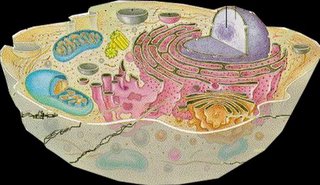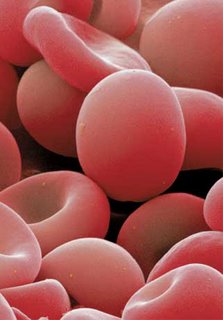INTRODUCTION
All agencies are composed of cells. The simplest forms of life are solitary cells that propagate by dividing in two. Larger organisms, like ourselves, are composed of eukaryotic cells, so that we can align our body cell to a city where groups of cells develop specialized functions and are connected by complex communication systems.
is amazing to see the wide variety of cell types that exist. Our own tissues and organs consist of at least 200 different types of somatic cells.
It is intended in this webquest to introduce students of 2 nd degree in the microscopic world of the eukaryotic cell, in their varied animal and plant, thus promoting an approach to the operation of the basic units that enable day to day, we as humans can stay alive.
TASK
 Upon completion of the work you have to develop a Power Point presentation in which they appear:
Upon completion of the work you have to develop a Power Point presentation in which they appear: b . Have other structures that make up the cell indicating its function.
c . Joint representation of the unit cell including all structures and organs.
Note: Paragraphs a, b and c should be developed for both the animal cell for plant cell
d . Scheme expose comparative similarities and differences between plant and animal cell. You can see an example here:
PROCESS
To carry out this task you will divide into teams of 4 people minimum and 6 maximum. Within each group will split into two subgroups, each of which will address the following issues:
Subgroup 1. Animal cell.
 Imagine that you are a nutrient that has just released into the small intestine and is absorbed from the bloodstream. From there you are led to a muscle cell to which you enter by active transport mechanisms ...
Imagine that you are a nutrient that has just released into the small intestine and is absorbed from the bloodstream. From there you are led to a muscle cell to which you enter by active transport mechanisms ...
Once there, you ought to inquire into the cell so that you can answer the following questions:
- What cellular structures can differentiate?
- What organelles see?
- What functions and biological process (chemical reactions) take place within these organelles?
Subgroup 2. Plant Cell.
Imagine that you are a cation aqueous solution stored in the soil. From there you are picked up by the root system of an oak and taken as raw sap to the leaves of the same. Once there, you pass a cellular level where you must investigate  the following questions:
the following questions:
- What cellular structures can differentiate?
- What organelles see?
- What functions and biological process (chemical reactions) develop within these organelles?
Each group should work separately, and once obtained all the information, the two subgroups must are to gather to share such information and assess the similarities and differences between both types of cells and produce the summary table and powerpoint. All members of the group without exception, must participate in both the search and comparison information, as in the exhibition of the work done in class, so that if during the exhibition in doubt by hearing peers, any member of the group that sets can resolve it.
RESOURCES
You must use all means you have at your disposal to achieve the objectives. Besides looking in encyclopedias and reference books, Internet emplearéis to complete your search.
The links you find the information you need are:
http://web.educastur.princast.es/proyectos/biogeo_ov/2BCH/B2_
Tewise / t21_CELULA/informacion.htm
http://www.kidlink.org/spanish/kidproj-spanish/celula/aulacell.html
http://www.univalle.edu.co/ ~ naturambiente / Laboratorios
/ lab% 20and% 20biologia% 20vegetal/Cloroplastos.htm
http://edicion-micro.usal.es/web/educativo/micro2/tema04.html
http://www2.uah.es/biologia_celular/LaCelula/Celula.html
http://recursos.cnice.mec.es/biosfera/alumno/
2bachillerato/La_celula/contenidos.htm
http://www.arrakis.es/~lluengo/mitocondria.html
http://www.arrakis.es/~lluengo/nucleo.html
http://www.arrakis.es/~lluengo/cvegetal.html
ASSESSMENT
The aspects taken into account when assessing are summarized as follows:
A. In relation to the PowerPoint presentation we focus our attention on:
 - a.1. clear, concise and accurate with images related
- a.1. clear, concise and accurate with images related
-a.2. Possibility of interaction in the presentation.
-a.3. Employment diagrams and tables
-a.4. Use of different methods of transition between screens.
be assessed with a maximum of 3 points.
B. In terms of looking at the package should
grounds in paragraph task, responding to questions in paragraph process.
be valued with a maximum of 4 points.
C. original presentation and how to approach the task
to be valued up to 1 point.
D. work in public defense and teamwork.
be assessed with a maximum of 2 points.
CONCLUSIONS
the end of the work you have learned not only the structure and functioning of the basic units of life, but you have come to the Power Point program and have participated in group work and exposure to concepts in public.



0 comments:
Post a Comment